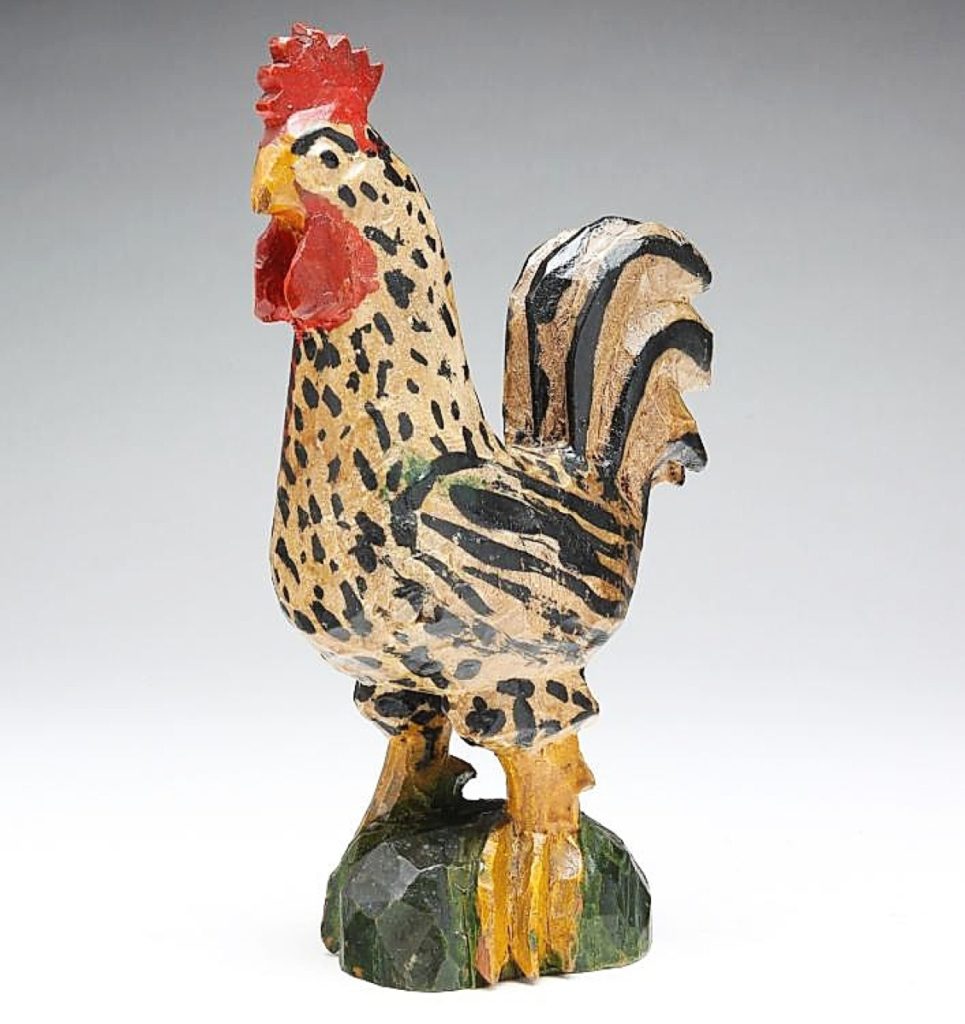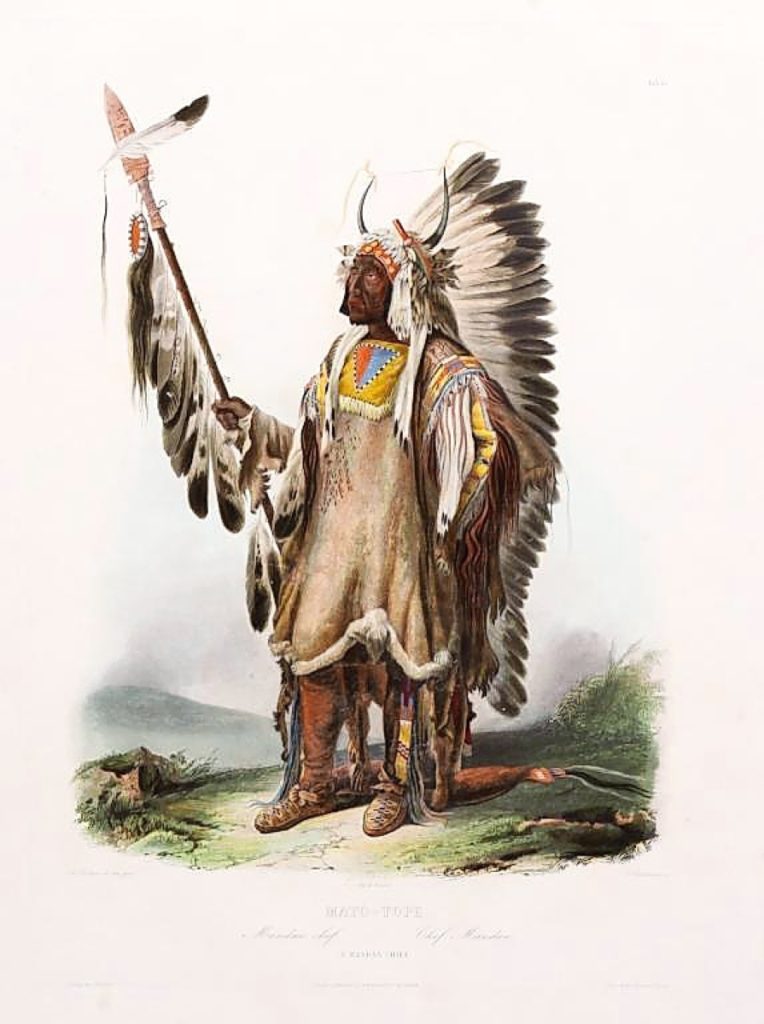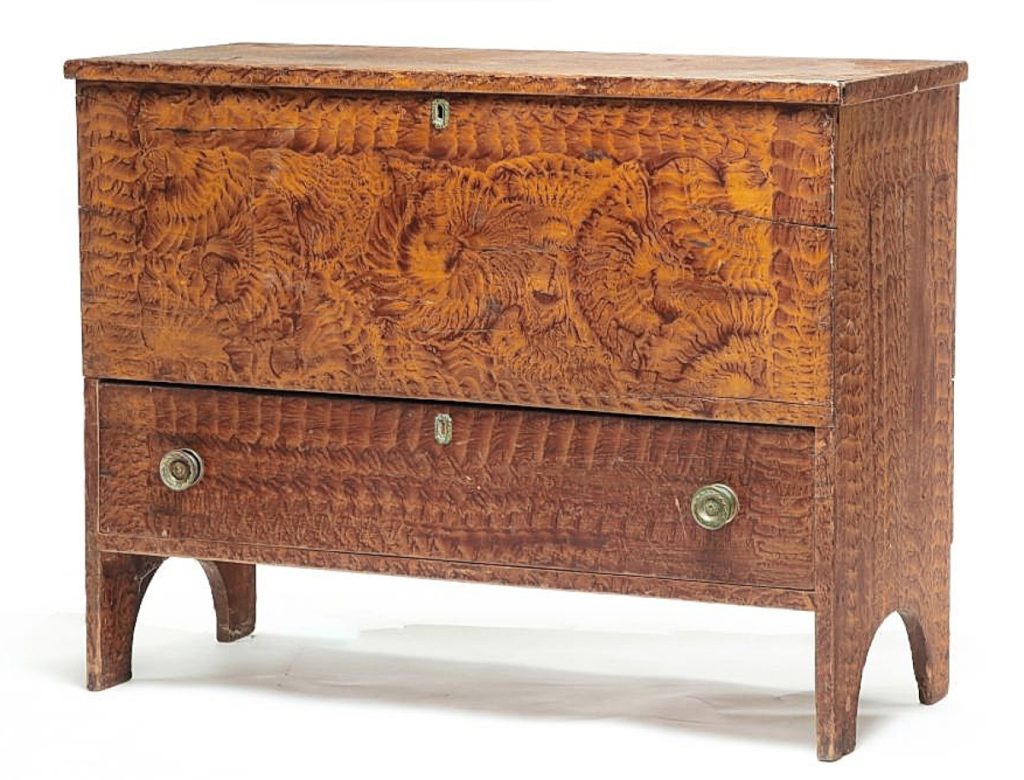
Jeff Jeffers, chief executive officer and principal auctioneer at Garth’s, reported that this was “maybe the best [Schimmel] rooster to come on the market.” Estimated at $7,5/15,000, it crowed proudly at $42,500.
COLUMBUS, OHIO – The Americana Session I and II online-only sales at Garth’s Auctioneers and Appraisers on May 21-22 featured 665 lots of Americana of all types. Figural and fine art occupied the top lots on both days, with a few pieces of intriguing furniture and tableware among them. The sales were accessible with a 94 percent sell-through rate, with everyday items for new and experienced collectors alike, bringing in $403,500 in overall sales.
The undisputed champion of both sessions was a folk art rooster by Wilhelm Schimmel, which doubled its high estimate to $42,500, a price around four times higher than any other lot in both sales. Schimmel was a German-born itinerant artist known for his polychrome pine creations, especially his sought-after eagle carvings. The rooster retained its vibrant original paint and was distinctive for its 9-inch height, as Schimmel’s roosters tend to be more in the 3- to 4-inch range. The lot included a letter from the late dealer Jess Pavey (1906-2000) who purchased it from Barbara Leisher of Carlisle, Penn. A longtime citizen of the town, Leisher remembered Schimmel from his time working for her relatives. The rooster was last sold at Garth’s from Pavey’s inventory in 1967 and sold on their in-house bidding platform, GarthsLive.

“Mato-Tope holding a lance and wearing a painted and quilled shirt,” by Karl Bodmer (1809-1893), hand colored aquatint on paper from Travels in the Interior of North America (circa 1832-43), skewered its $4/6,000 estimate to achieve $8,750.
Also associated with Pavey was an early Twentieth Century cast iron lawn jockey that sold for just over $4,000. Although unremarkable at first glance, like many that have come before and with most of its paint missing, this jockey had a provenance well-known to veteran collectors. It once stood outside Pavey’s Fine American Antiques shop in Birmingham, Mich., and sold to a Southwest buyer after a long exchange with multiple online contenders that began at $750.
Right behind the rooster in the first session was a Kentucky folk art sandstone carving from the late Nineteenth Century, with another in a similar style close behind in the top lots. Found on a farm, they were reportedly used as boundary markers. The female carving had a weathered surface but was otherwise in good condition, carved with “CT” on the rear. It landed $10,625, more than ten times its original estimate. The male carving showed moderate deterioration yet still doubled its estimate to $3,000. The dating of both figures is mostly owed to the inscription on this sculpture’s back, “JM 1895.” At around one foot high each, they would be difficult to miss on a property line and a shame to trip over if one did. Not to be separated, both figures sold to the same Midwest collector.

This hand decorated mule chest was one of the few top lots without a known maker, yet still sold for $4,625 ($2/4,000).
The second session was topped with works by the Swiss-French artist Karl Bodmer. From 1832 to 1834, Bodmer was hired by explorer Prince Maximilan zu Wied-Neuwied on his expedition along the Missouri River in the tribal lands of the Omaha, Mandan, Hidatsa and Blackfoot nations, among others. There he captured accurate portraits of the region’s then-numerous inhabitants, which were reproduced and published in a record of the prince’s travels. The top two of these three hand colored aquatints were of the Mandan chief Mato-Tope, or Four Bears (circa 1784-1837). Bodmer painted him as a chief, which commanded $8,750, and as a warrior that won $5,000. Mato-tope later died of smallpox, one of the roughly 80 percent of the Mandan tribe to perish from the imported disease.
Maker’s names abounded in the top lots of these sales. The second highest lot in Session II was a coin silver spoon hallmarked for Paul Revere, with shell detail and monogramming on the handle, that sold for $6,250 to a New England collector on LiveAuctioneers. “We don’t handle a lot of Revere silver,” said Richard “Jeff” Jeffers, chief executive officer and principal auctioneer at Garth’s. “In my 27 [years’ experience], this is only the fourth piece to come up here.”
Prices quoted include the buyer’s premium as reported by the auction house. Garth’s next online Eclectic Auction will be conducted June 9-19. For more information, 740-362-4771 or www.garths.com.









